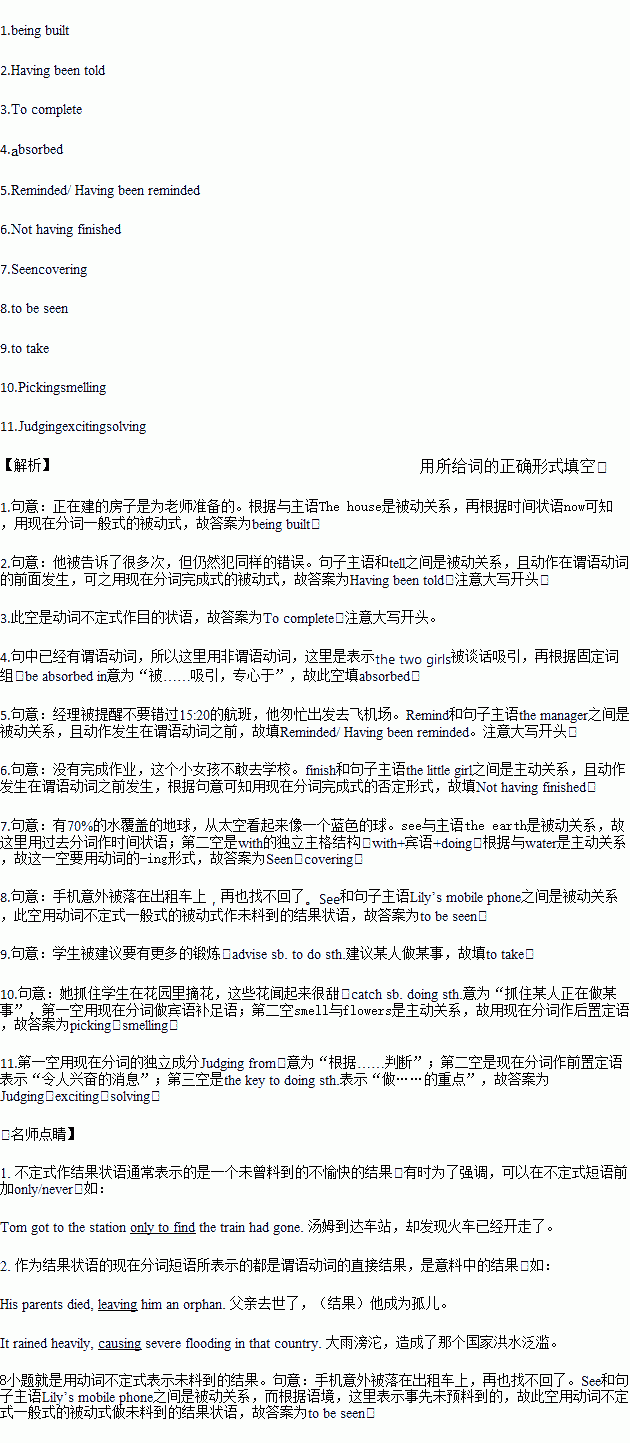题目内容
1.The house _________ (build) now are for the teachers.
2._________(tell) many times, he still repeated the same mistakes.
3._________ (complete) the program, they have to stay here for another two weeks.
4.Much to our surprise, the two girls are still sitting on the ground, _________ (absorb) in talking.
5._________ (remind) not to miss the flight at 15:20, the manager set out for the airport in a hurry.
6._________ (not finish) the homework, the little girl doesn’t dare to go to school.
7._________ (see) from the space, the earth, with water_________ (cover) seventy percent of its surface, looks like a blue ball.
8.Lily’s mobile phone was left in a taxi accidentally, never_________ (see) again.
9.The students are advised _________ (take) more exercises.
10.She caught the student _________ (pick) flowers _________ (smell) sweet in the garden.
11._________ (judge) from his _________ (excite) news, his friends have found the key to __________ (solve) the problem.

